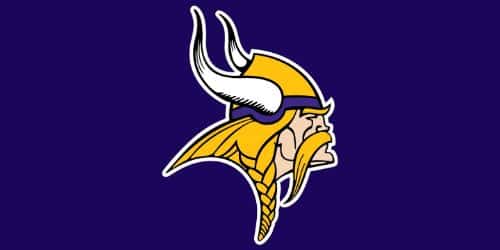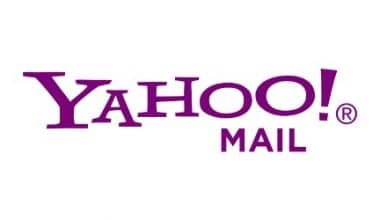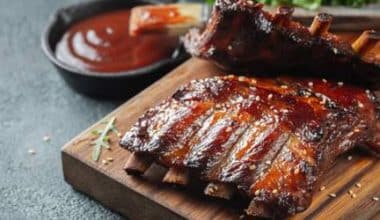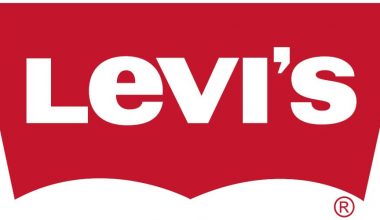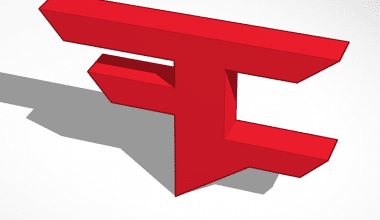The Minnesota Vikings have been an NFL team for more than 60 years. The Vikings, sometimes known as “The Purple People Eaters,” are no strangers to the postseason. In their more than 60 years of existence, they have made 30 postseason appearances. Do you want to know more about the history of the Minnesota Vikings, the Minnesota Vikings logo, Minnesota Vikings players and the Vikings games? Then this article is for you.
Vikings Minnesota History
The professional American football team known as the Minnesota Vikings was founded in 1961 and currently plays as a member of the North Division of the National Football League. The club’s home stadium is U. S. Bank Stadium, and Kevin O’Connell serves as the team’s head coach.
On January 28, 1960, the Minnesota Vikings team was selected as the National Football League’s (NFL) 14th franchise, with play beginning in 1961. The name “Minnesota” rather than “Minneapolis-St. Paul” would be used for the team. The Vikings moniker was chosen in part to
Minnesota Vikings Logo History
The distinctive image of the Vikings logo serves as the cornerstone of this franchise’s whole history of logos. In the early 1960s, a sports cartoonist created it.
As an illustration, the initial Vikings logo features a depiction of a Viking with two yellow horns. The Viking with the two white horns appears in the rest of their logo’s history. The Viking in the initial logo has white skin. Following that, pale-skinned Vikings appear in all of the other logos. The Viking in the original logo of the franchise has a white mustache, as opposed to colored mustaches in the remainder of the team designs.
The logo, which was first designed in 1961, has only undergone minor “facelifts” over time. The Minnesota rugby squad was one of those occasions where the ideal shot could be captured on the first try.
Minnesota Vikings Logo (1961 – 1965)
Karl Hubenthal, a sports cartoonist for the Los Angeles Times, created the initial Viking logo in 1961 after being contacted by Bert Rose, the Minnesota Vikings’ general manager at the time.
It was a black, white, and yellow painting depicting a profile of a Viking facing to the left. The man’s strong, serious demeanor reflected the team’s strong personality and playing style. The “Norseman” logo immediately rose to prominence as one of the most famous symbols in American football history.
Minnesota Vikings Logo (1966 – 1997)
The Minnesota Vikings’ main logo, dubbed “The Norseman,” features a profile of a Viking with long, braided gold hair, a thick mustache, and bushy eyebrows. The Viking is wearing a gold and purple helmet with two white horns, one on each side of the helmet.
Minnesota Vikings Logo (1997 – 2001)
The primary logo for the Minnesota Vikings is a profile of a Viking with long, braided hair in gold, a thick mustache, and bushy eyebrows. The Viking is wearing a purple and gold helmet with two white horns, one on each side.
Since their first season, the Vikings have used this logo in a variety of color schemes. This particular version was in use from 1997 to 2001; for the 1997 season, the purple was made lighter and the gold was made darker.
Minnesota Vikings Logo (2002 – 2009)
The Minnesota Vikings logo appeared in 2002 and features a profile of a Viking with long, braided hair in gold, a thick beard, bushy eyebrows, and a purple and gold helmet with two white horns, one on each side.
Since their first season, the Vikings have used this logo in a variety of color schemes. This particular rendition was in use from 2002 to 2009; for the 2002 season, the purple color and the skin tone were both somewhat darker.
Minnesota Vikings Logo (2010 – 2012)
In 2010, the primary logo for the Minnesota Vikings is a profile of a Viking with long, braided gold hair, a thick mustache, and bushy eyebrows. The Viking is wearing a gold and purple helmet with two white horns, one on each side of the helmet.
Since their first season, the Vikings have used this logo in a variety of color schemes; this particular rendition was in use from 2010 to 2012; the color of the purple was lightened for that season. The logo had a slight redesign in 2013, with modifications to the horns and other design aspects.
Minnesota Vikings Logo (2013 – Present)
The Vikings once more changed their major logo in 2013, this time featuring a profile of a Viking with long, braided gold hair, a thick mustache, and bushy eyebrows donning a gold and purple helmet with two white horns, one on either side of the helmet.
This logo has been used by the Vikings since their first season in a variety of color schemes. The horns and the general design of the logo, particularly at the lower left by the hair, were modified in this version, which was first used in 2013.
Minnesota Vikings Logo Symbol
A symbol is an image or thing that stands in for an abstract idea, frequently one related to one’s religion. Symbols have been used by every civilization, from the oldest to the most recent, to make the abstract real and visible and to convey the assurance that a higher force was sympathetic to and interested in human struggles.
The team features two first letters, “M” and “V,” that are drawn in a stylized fashion with their upper sections enlarged and curved, just like the horns on the Viking’s helmet. This logo is in addition to the well-known Norseman.
In Norse mythology, symbols were employed to represent a variety of themes, including the difficulties of daily living and the unanswered question of what lay beyond death. Although some of these marks were undoubtedly in use much earlier, some can be definitively dated to the Viking Age (c. 790–c. 1100 CE). After Christianity had taken root in Scandinavia, other symbols appear to have emerged later (between c. 1100 and c. 1300).
Minnesota Vikings Logo Color
In 1966, purple was added to the original color scheme of white, black, and yellow, sometimes known as “Vikings Gold,” and it has remained this way ever since.
Font
Due to the odd shape of the font, the letters “M” and “V” stand out particularly.
Helmets
The Minnesota Vikings’ helmets have a solid purple exterior and a white side with a stylized depiction of horns. In keeping with the Norseman concept, the white horns are emerging from the gold rings. The black tone of the grill gives it an air of confidence and boldness.
The Truth Behind the Horned Helmet
Since the Minnesota Vikings started competing in the 1961 season, a lot has changed. New stadiums have been erected, players have come and gone, and outfits have been modernized. The team’s recognizable horned helmets, on the other hand, have remained constant. Every Vikings player, from Fran Tarkenton in 1961 to Everson Griffen in 2016, has had the horned helmet. This week, we’ll look into the history of Viking-era horned helmets.
Why are horns painted on the helmets of the Minnesota Vikings? Many people think it’s because Viking-era helmets featured horns. They are omnipresent in pop culture. One illustration is the comic book Hägar the Horrible. There, horned hats are the norm; even kids, pets, and ducks don them!
In actuality, Viking helmets never included horns. If they had, it would have been really weird. Helmets are defensive gear that shields wearers from sword attacks. A blade that strikes an exposed helmet deflects. Conversely, knobs absorb the impact into the skull. No Viking-era helmets with horns have ever been discovered. There are no horns on the helmets of Viking warriors in any images from today.
Winged helmets were created by Carl Emil Doepler, a costume designer, in 1876 for Richard Wagner’s opera cycle The Ring of the Nibelung. In a book about Germanic gods and heroes published in 1882, Doepler later added horns. Since then, the horns have come to be associated with Viking imagery.
Simply said, it’s impossible to resist the allure of the Viking with horns on his helmet. Even Scandinavians adore wearing them, especially when supporting their home clubs in sports. Horns are used for identification. Additionally, they emphasize the Vikings’ furious nature. As a result, they are exactly where they have always been on the Minnesota Vikings helmet and fit perfectly.
Minnesota Vikings Uniforms
The Minnesota Vikings’ jerseys are made up primarily of the colors white and purple with some subtle but significant yellow accents. The squad dons purple jerseys with white numbers and yellow accents during the games played at home, as well as white pants with purple side stripes. The road clothes consist of purple slacks with white and yellow stripes and white shirts with purple player numbers.
Vikings Games
The Minnesota Vikings’ 2021 season can best be summed up in one word: middling. Minnesota still struggled to bring everything together. The team struggled in crunch time; astonishingly, eight of the Vikings’ nine losses were by eight points or less.
The final result was a forgettable 8-9 record. Of course, there is still an opportunity for development. The league’s best receiver, Davante Adams, left the Packers. Age is catching up with Aaron Rodgers.
Nevertheless, it is difficult to picture Minnesota seriously contending with Green Bay and Aaron Rodgers for the divisional title. The chance of a wild-card appearance seems a little higher.
There were indicators of a strong squad there; star wideout Justin Jefferson improved on his outstanding 2020 campaign in 2021, gridding his way to 1,616 receiving yards and 10 touchdowns and a second consecutive trip to the Pro Bowl. When Danielle Hunter was on the field, he was a force, recording six sacks in seven contests. In 2021, Dalvin Cook continued to be Dalvin Cook, averaging over five yards per carry.
Who Designed the Minnesota Vikings Logo?
It is a beautiful memorial of a man who, according to friends, led a rich life that was adorned with achievements few could match.
The memorial spoke to Hubenthal’s connections with famous people in Los Angeles as well as the programs he created for the Harlem Globetrotters and Los Angeles Dodgers. It stated that he was a well-known cartoonist who got his first full-time job at the age of 17 and rapidly became one of the best in the country.
The Vikings’ original ownership group was preparing for their first season in 1960 when they decided to join the NFL rather than the fledgling AFL. Ownership hired Norm Van Brocklin, a former quarterback who had played for the Rams, as the team’s first coach and designated Bert Rose, the former Los Angeles Rams public relations director, as the team’s general manager.
But with a debut season approaching, the two were left in charge of overseeing the creation of the team’s clothing and logo. They, therefore, gave Hubenthal, who they knew from their time in Los Angeles, a call.
Except for the team name, which was chosen to honor the state’s Scandinavian background, they didn’t really have any instructions for Hubenthal.
The creation of logos is a multimillion-dollar business today. The Vegas Golden Knights, the newest addition to one of the top four professional sports leagues in the United States, used private aircraft to travel to meetings with Adidas and the NHL’s marketing division as they created their logo and uniforms.
Hubenthal, who created the still-in-use clothes and horned purple helmet while working discreetly in his office, was, nonetheless, trusted by the Vikings at the time. Even though his daughters frequently passed by and occasionally offered assistance, he preferred the community of his workshop.
Minnesota Viking Achievement
In 1961, the Minnesota Vikings defeated the Chicago Bears in their NFL debut, 37-13. Before the NFL and AFL merged, the Vikings defeated the Cleveland Browns in the final NFL Championship game in 1969, 27-7.
The Vikings rose to prominence as one of the league’s juggernauts when Bud Grant assumed control of the head coaching position in 1967. The Vikings won 11 division titles and three NFC championships in his eight-year reign (1967–1983).
In the 1970s, the Vikings participated in four Super Bowls.
The Vikings held the league’s top run defense ranking from 2006 to 2008, making them the first team to do so since the 1970 AFL-NFL merger.
When Did the Vikings Change Their Logo?
The Minnesota Vikings’ logo was changed in 2013, with the Viking’s outlines being slightly adjusted and smoothed.
What Is the Vikings Slogan?
The Vikings’ slogan is “Skol Vikings, honor your name, Go get that first down, Then get a touchdown. Fight!”
It means even though his blade is dull, the brave man will fight well and prevail. Often, those who advance with the most enthusiasm succeed rather than those with the most points.
What Does the Viking Logo Mean?
The ferocious warrior from Scandinavia, which is today Denmark, Norway, and Sweden, is represented by the logo.
Why Are Minnesotans Called Vikings?
As a tribute to Minnesota’s significant Scandinavian American culture, they are named for the Vikings of medieval Scandinavia.
Top Minnesota Vikings Players of All Time
Some players had a significant impact in a short period of time and ought to be acknowledged. Here is a list of some top Minnesota Vikings Players:
#1. Alan Page
The Vikings’ first step toward their era of dominance in the 1970s was the selection of Page, the beating heart of the Purple People Eaters, combined with Bud Grant’s appointment as head coach. Page was the first defensive player to win the league’s MVP award in 1971 and participated in all four of the Vikings’ Super Bowl victories. In 1971 and 1973, he was the defensive player of the year. He had 148 unofficial sacks with the Vikings.
Page, a six-time All-Pro and nine-time Pro Bowler had a remarkable talent for juking the snap and piercing the offensive line. It’s a credit to his diligence and intelligence that he was able to do all of that while playing defensive linemen and weighing in at just 245 pounds. After retiring, he also rose to the position of Minnesota Supreme Court Justice.
#2. Fran Tarkenton
In addition to being the most prolific passer in NFL history at the time of his retirement, his ability to scramble revolutionized the position of quarterback. surpassed all Vikings players to retire as the NFL’s all-time leader in passing yards (47,003) and passing touchdowns (342) respectively. spent some time playing for the Giants, where he was a four-time pro bowler, and the Vikings, where he was a five-time pro bowler. was the MVP in 1975, guided the club to three Super Bowls, and was inducted into the Hall of Fame in 1986. Including the yards he gained outside the line of scrimmage, Tarkenton has the twelfth-most rushing yards in franchise history.
#3. Cris Carter
Cris Carter had superior hands than everyone else, including Jerry Rice, Randy Moss, Steve Largent, and Fred Biletnikoff with a gallon of the stick. He could be slipping out of bounds while catching a pass with one hand while doing so. Carter, a two-time All-Pro and eight-time Pro Bowler holds nearly every receiving record for the Vikings, including receptions (1,004), yards (12,383), and touchdowns (110). Most receiving measures, including receptions (third), yards (seventh), and touchdowns, place him in the top ten in NFL history (fourth). Once the Hall of Fame gets its act together, a certain Hall of Famer. The Vikings’ best $100 investment ever.
#4. Randall McDaniel
He started 12 straight pro bowl games, setting an NFL record (one of those was with Tampa Bay, though). With the Vikings, he won seven All-Pro awards, started 202 straight games, and occasionally lined up as a fullback in goal-line situations. Five 1,000-yard rushers and four 3,000-yard quarterbacks followed McDaniel’s lead because to his ridiculous posture and the incredible advantage it provided. He is unquestionably one of the best guards to ever play in the NFL, if not the best.
#5. Ron Yary
It was the first offensive lineman ever selected first overall, and it mostly succeeded. Yary was a staple at right tackle for all four Super Bowl teams and eleven division titles. He was a seven-time Pro Bowler and six-time All-Pro. He was a member of the 1970s All-Decade squad and was inducted into the Hall of Fame in 2001. His 14 years with the team entrenched him as the offensive line’s linchpin thanks to his combination of size, athleticism, strength, and intellect.
#6. John Randle
In a good way, John Randle was one crazy guy. Randle, an undersized defensive tackle who went undrafted, is now sixth in NFL history with 137 career sacks and the all-time leader with 114 for the Vikings. Randle, a seven-time professional bowler and six-time All-Pro, was just inducted into the Hall of Fame. He carried a porous Vikings defense that had no one around him, leaving him triple-teamed frequently, and recorded eight straight seasons with more than 10 sacks.
#7. Carl Eller
Eller shouldn’t have had to wait so long to be inducted into the Hall of Fame, which he was in 2004. Eller, the defensive end with the Purple People Eaters opposite Jim Marshall, is credited with 130 unofficial sacks. He won the pro bowl six times and was an All-Pro five times. Along with Marshall and Tingelhoff, Eller is one of just three Vikings to have made 200 starts for Minnesota. Eller was the standard defensive end for his era at 6’5″ and 250 pounds.
#8. Randy Moss
He was a nuclear deterrent for Minnesota on the football field, putting the dread of Armageddon – or, at the very least, a 56-yard touchdown – into rival defenders. Moss spent seven years with the team and was a five-time pro bowler, three-time All-Pro, offensive rookie of the year in 1998, when he set a rookie record with 17 receiving touchdowns, and an All-Pro three years later. In six of his seven years with the Vikings, he had more than 10 touchdowns. In terms of receptions, receiving yards, and overall touchdowns, Moss is second in franchise history. Some young, masochistic followers hope he will return one day.
#9. Chuck Foreman
He was one of the NFL’s greatest running backs but is largely forgotten. Foreman, a four-time All-Pro and five-time Pro Bowler, was one of the best dual-threat running backs the NFL has ever seen. His 1975 campaign was one to remember, with 1,722 yards from scrimmage, a then-NFL record 73 receptions for a running back, and a then-NFL record 22 touchdowns.
During his seven years with the franchise, the Vikings ran Foreman into the ground (typical Vikings drive: Foreman run on first down; Foreman run on second down; third-down pass and look for Foreman). His career totals appeared a little underwhelming as a result. Nevertheless, he has the fourth-most touchdowns in Vikings history and is second all-time in rushing yards, ninth in receptions, and thirteenth in receiving yards. Foreman frequently has 102 rushing yards and 97 receiving yards in a single game.
#10. Jim Marshall
Jim Marshall accidentally shot himself once while cleaning his shotgun. Throughout the following 282 weeks, he played football every single week. Marshall recorded an unofficial 127 sacks in his career despite being an undersized defensive end (and possibly the fatal weakness on those Vikings teams in the 1970s that couldn’t stop the run in Super Bowls). With 29 fumble recoveries, he holds the record for the NFL and the Vikings. Yes, he is the one who formerly ran in the opposite direction.
Know anything else he did throughout that game? got a sack and caused a turnover, which was then returned for a touchdown and the game’s winning points. And once more: He participated in 282 consecutive games as a defensive end in the National Football League throughout the 1960s and 1970s, when players were a step beyond Neanderthals. That he does not have a shrine in the Hall of Fame is a crime.
#11. Fred Cox
The Vikings’ all-time leader in extra points, field goals, and scoring is Fred Cox, K, 50. The all four Super Bowls for the Vikings, which is a questionable honor, I suppose.
#12. Darrin Nelson
Most well-known for one ball he didn’t catch, but also has the seventh-most rushing yards (4,231) and the 17th-most receiving yards (2,202) in history. also a good returner
#13. Tommy Mason
Eighth-highest rusher in franchise history and a three-time pro bowler with the Vikings. However, he left the Vikings before they won the Super Bowl.
#14. Ed McDaniel
47-year-old linebacker Ed McDaniel, who was undersized, was a ball-hawk. was an important factor in the 1998 season thanks to his pro bowl performance, three forced fumbles, seven sacks, and 93 tackles.
#15. Nate Wright
Wright was a key member of the 1970s Vikings and is best known for being the cornerback Drew Pearson was shoved down by. He had the fifth-highest total of interceptions at the end of his time with the Vikings.
#16. Ted Brown
Ranked fourth in rushing yards and 15th in receiving yards while scoring the sixth-most touchdowns in Vikings history. was a member of several subpar Vikings teams in the early 1980s, though.
#17. Gene Washington
Washington, the Vikings’ original No. 84 deep threat, averaged 21 yards per reception for the 1969 squad. Washington, a two-time Vikings pro bowler, ranks eleventh for Minnesota in receiving yards and twelve in receiving touchdowns.
#18. Robert Griffith
A hard-hitter who would assault anyone in front of him, Griffith was essentially a little linebacker at strong safety. Five seasons in a row with at least 70 tackles, seven years in purple with 17 interceptions, 7.5 sacks, and seven forced fumbles.
#19. Antoine Winfield Winfield
41-year-old Antoine Winfield Winfield has played for the Vikings for six seasons and has shown some of the best tackling the corner position has ever seen, in addition to some decent pass coverage. The only factor causing the team’s mediocre ranking is its short duration.
#20. Daunte Culpepper
Daunte Culpepper, a 29-year-old quarterback. This ranking may seem a little high or low because Daunte’s career was everything from linear. In one season, he ran for ten touchdowns while in another, he passed for 39; in a third, he recorded the most fumbles ever while wearing a Vikings uniform with 23.
#21. Steve Jordan
Unquestionably, the greatest tight end in Vikings history is Steve Jordan, a 28-year-old. The seventh-most receiving touchdowns, sixth-most receiving yards, and third-most catches in franchise history. Jordan was a skilled blocker who was chosen for six consecutive Pro Bowls from 1986 to 1991.
#22. Joe Kapp
Joe Kapp, quarterback, 27, is ranked higher than most quarterbacks based on his stats and length of service, but Kapp stands out due to his charisma and tenacity. In addition to helping the Vikings win their first Super Bowl and make their first postseason appearance, he tied the NFL record by passing for seven touchdowns in a single game. Old-school Vikings supporters continue to speak highly about Kapp.
What Does Skol Mean?
Because the team has long used the word as part of their chants, which include singing the “Skol, Vikings” song after a touchdown, the chant was modified to incorporate fans’ shouting “skol.”
Old Norse is where the word itself originates. A skål , which is now written as “skål ” in Danish, Norwegian, and Swedish, was a shared bowl that was frequently filled with beer. It was a practice that was shared with friends and the community, so it evolved into a way to express “cheers” or “good health.”
Where Does the Vikings’ Skol Chant Come From?
The Icelandic men’s soccer team brought the chant to the Vikings. Following their victory against England at Euro 2016, the national squad returned home to the “Viking War Chant” from tens of thousands of supporters. Fans form a “V” with their arms during the shout as a drummer bangs out two rapid beats. The fans then give a single clap and shout “Skol” in reference to the Vikings.
Fans of the Vikings were moved by the situation and started emailing the team. Fans believed their Vikings should embrace it because it had the name “Viking” in it. The thought of individuals working together in harmony was quite terrifying. People started texting me as soon as I saw it, according to Vikings Vice President of Content and Production Bryan Harper. We had hundreds of letters from supporters saying, “We’ve got to do this,” and we’re the only team that can do it, over the course of the following day.
The chant made its debut at the Vikings’ inaugural home game at US Bank Stadium after the team requested permission from the Icelandic national team to use it.
According to Harper, the chant is only used once before the game and once during the game because the squad doesn’t want it to become stale.
What Does the Minnesota Vikings Logo Mean?
The Minnesota Vikings professional football team’s logo features a Viking with yellow hair wearing a purple and yellow helmet with two horns. This badge just graphically depicts the name of the club, its personality, and its spirit; it contains no hidden connotations.
Why Are the Minnesota Vikings Called the Vikings?
As one of the American states founded by Scandinavians, Minnesota, the professional football team from Minnesota adopted the Vikings moniker in 1960 to honor the state’s rich history. The “Vikings” are a sign of strength and willpower in addition to the history of Minnesota.
Who Designed the Vikings Logo?
Karl Hubenthal developed a striking depiction of a Viking in profile, angled to the left, with his hair and helmet yellow and a long, white mustache for the first Minnesota Vikings in 1961. The club’s logo has only been updated twice over the years, with the original concept staying intact. However, the color scheme and the curves have been enhanced.
How Many Vikings Are in the Hall of Fame?
Twenty Minnesota Vikings football players, one head coach, and one CEO are members of the Hall of Fame as of 2021. Seven of them played for the Vikings for only a little portion of their careers, but they were selected to the Hall of Fame because of their athletic prowess while playing for other teams.
Conclusion
The horns have come to be associated with the Viking logo. Even Scandinavians adore wearing them, especially when supporting their home clubs in sports. Horns are used for identification.
Related Articles
- YAHOO LOGO: Meaning, Why Yahoo Changed Their Logo and History
- CLEVELAND BROWNS LOGO: History, Meaning, Evolution
- NFL LOGO: Meaning, Evolution, and History
- 2023 BEST VITAMIN BRANDS: 17 Top Picks (Updated)
